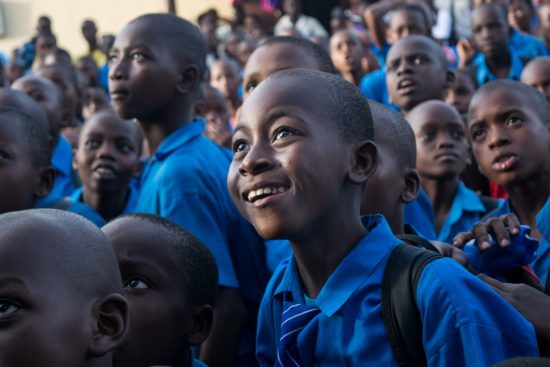GARDP and Novartis announce partnership to reduce child deaths from drug-resistant infections
The Global Antibiotic Research & Development Partnership (GARDP) and Novartis are joining forces to accelerate the development and availability of generic antibiotic treatments for children in low- and middle-income countries.
The strategic partnership responds to the call from the World Health Organization for affordable, improved, and adapted antibiotic formulations and regimens for this vulnerable population, for which treatment options are limited. The agreement will leverage knowledge and expertise sharing between Sandoz, the Novartis generics division, and GARDP to drive incremental product innovation. It will also leverage the know-how and partner network of Novartis Social Business in areas such as supply chain, capacity building, and measurement and evaluation to improve availability of medicines, in particular in remote and underserved areas.
Significant progress has been made in recent years to improve child health globally, including a 50 percent reduction in child mortality since 1990. However, antimicrobial resistance (AMR) is a major barrier to further reducing childhood mortality. Infectious diseases, including serious bacterial infections such as pneumonia and sepsis, are a leading cause of child morbidity and mortality with more than three million deaths reported in 2013, nearly two million of which occur in sub-Saharan Africa.1 The estimated 214 000 deaths of newborns each year due to drug-resistant infections pose a great concern.2
“Children are not small adults and require treatments that are adapted in terms of regimen, dose and formulation. However, challenges around conducting clinical trials in children have led to lack of evidence-based treatments available for them. And lack of evidence hinders the development of treatment guidelines for their care,” said Dr Manica Balasegaram, Director of GARDP. “This partnership not only has the potential to reduce the number of preventable deaths in children, but also to help tackle AMR through addressing the overuse and misuse of antibiotics.”
The two groups plan to improve and adapt existing generic antibiotic formulations and dosing regimens for newborns and children. In particular, they plan to develop heat-stable pediatric formulations against diseases that represent the leading causes of death in under-fives in lower-income countries. This work will also help determine future collaboration opportunities between both organizations.
“New treatment formulations are needed to address the unmet needs of children in lower-income countries,” said Harald Nusser, Global Head of Novartis Social Business. “Yet, medicines by themselves are not sufficient; they also need to be affordable and accessible for patients. A very important part of our role will therefore be to work with partners on the ground to ensure these medicines reach patients, and in particular those living in remote and underserved areas.”
In addition to improving and adapting generic antibiotics, both organizations are committed to embedding access and stewardship measures on the appropriate use of antibiotics, limitation of indications, and clearly defined distribution channels to ensure that children living in resource-constrained environments receive the antibiotics they need.
Source: GARDP



